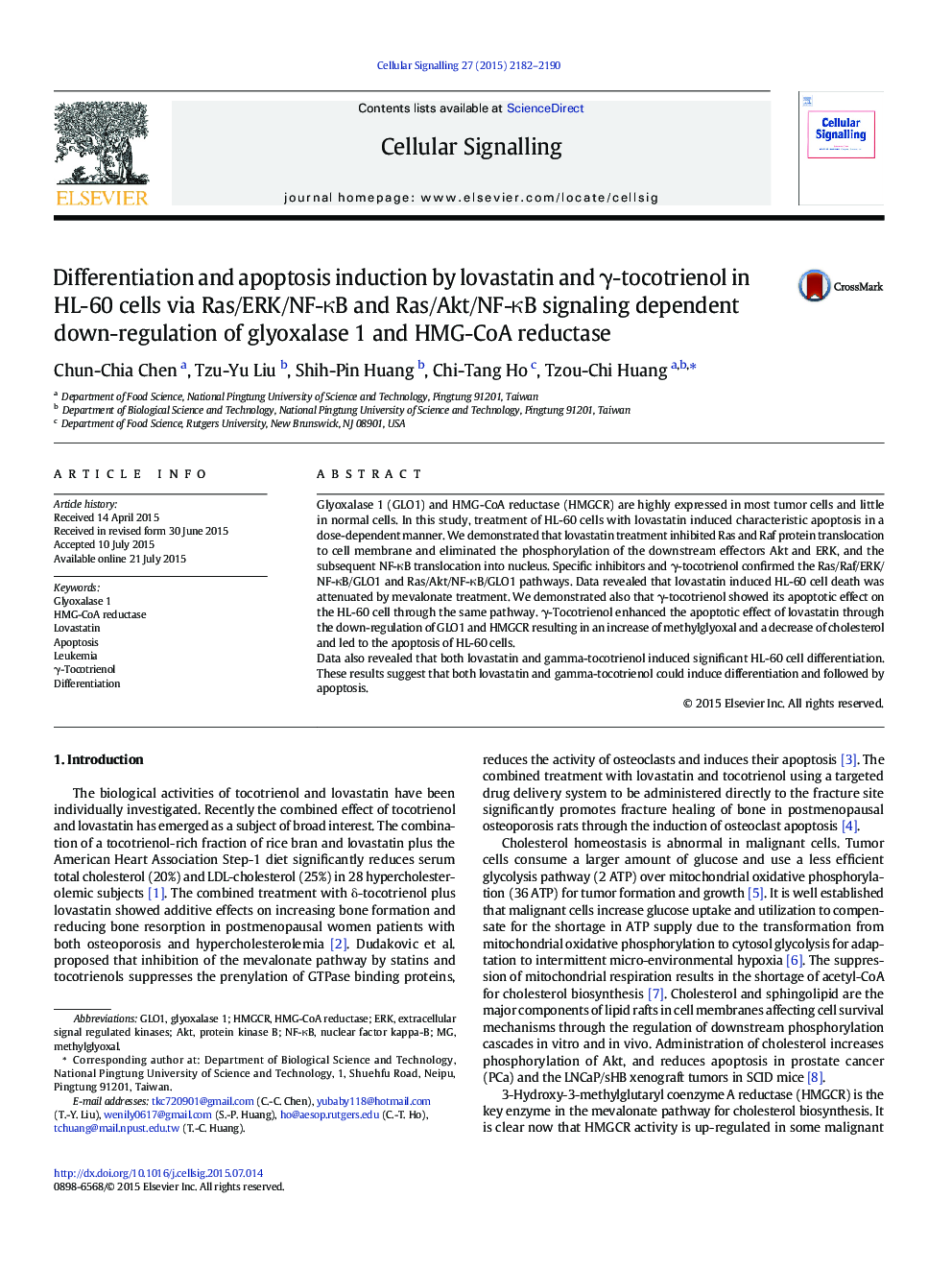| Article ID | Journal | Published Year | Pages | File Type |
|---|---|---|---|---|
| 1963556 | Cellular Signalling | 2015 | 9 Pages |
•Lovastatin and γ-tocotrienol down-regulated GLO1 and HMGCR in HL-60 cells.•Lovastatin markedly increased MG levels and reduced intracellular total cholesterol content.•Lovastatin and γ-tocotrienol could inactivate Ras translocation from the cytosol to cell membranes.•Lovastatin-induced apoptosis, phosphorylation of Akt and ERK and decreased expression of GLO1 were abrogated by the addition of mevalonate.•Lovastatin and γ-tocotrienol could down-regulate downstream signaling molecules of Ras, including Raf/ERK/NF-κB and Akt/NF-κB pathways.
Glyoxalase 1 (GLO1) and HMG-CoA reductase (HMGCR) are highly expressed in most tumor cells and little in normal cells. In this study, treatment of HL-60 cells with lovastatin induced characteristic apoptosis in a dose-dependent manner. We demonstrated that lovastatin treatment inhibited Ras and Raf protein translocation to cell membrane and eliminated the phosphorylation of the downstream effectors Akt and ERK, and the subsequent NF-κB translocation into nucleus. Specific inhibitors and γ-tocotrienol confirmed the Ras/Raf/ERK/NF-κB/GLO1 and Ras/Akt/NF-κB/GLO1 pathways. Data revealed that lovastatin induced HL-60 cell death was attenuated by mevalonate treatment. We demonstrated also that γ-tocotrienol showed its apoptotic effect on the HL-60 cell through the same pathway. γ-Tocotrienol enhanced the apoptotic effect of lovastatin through the down-regulation of GLO1 and HMGCR resulting in an increase of methylglyoxal and a decrease of cholesterol and led to the apoptosis of HL-60 cells.Data also revealed that both lovastatin and gamma-tocotrienol induced significant HL-60 cell differentiation. These results suggest that both lovastatin and gamma-tocotrienol could induce differentiation and followed by apoptosis.
